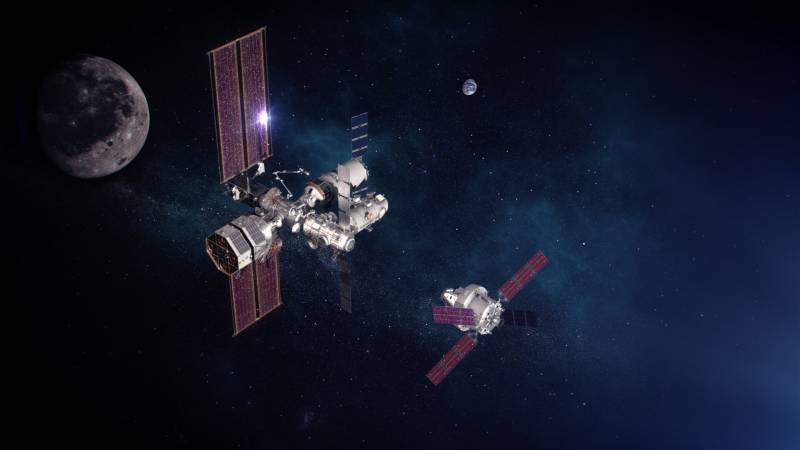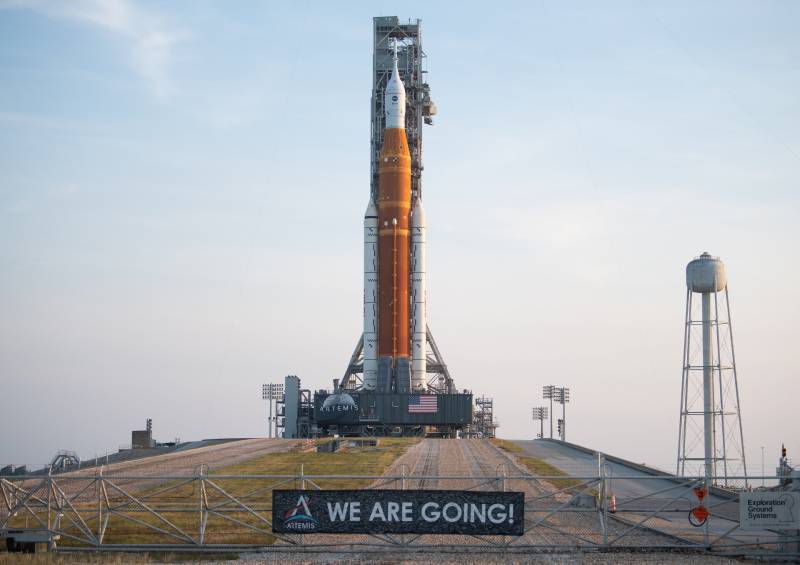The spacecraft’s heat shield, for example, must protect the Orion capsule from the extreme temperatures (approximately 5,000 degrees Fahrenheit) that it will encounter when reentering Earth’s atmosphere. NASA will also monitor Orion’s navigation systems and its resilience when traveling through high radiation environments near Earth and the moon.
The spacecraft will approach the lunar surface, getting as close as 60 miles aboveground before traveling roughly 40,000 miles beyond the moon and back to Earth, in a test of reentry, descent and splashdown.
If successful, this will pave the way for Artemis II, which will carry a human crew around the moon
 An illustration of the full Gateway configuration with Orion approaching Gateway. (Alberto Bertolin/NASA)
An illustration of the full Gateway configuration with Orion approaching Gateway. (Alberto Bertolin/NASA)
Between 1968 and 1972, America launched nine human missions to the moon, six of which successfully touched down, allowing 12 men to walk on the lunar surfaces. Artemis III — slated for 2025 and the last mission in the Artemis program — will land the first woman and the first person of color on the moon’s surface. It will be the first time humans have stepped foot on the moon for more than 50 years.
Before Artemis III lifts off, NASA plans to build Gateway, a multipurpose outpost orbiting the moon that will be a home base for astronauts to live between landings on the lunar surface, and a laboratory to support scientific research and human exploration on and around the moon. Gateway will provide options for Earth science, heliophysics, lunar and planetary science, and more by allowing extended views of the Earth, sun, moon and space not possible from Earth’s surface or from Earth’s orbit.
“This is a mission that truly will do what hasn’t been done and learn what isn’t known,” said Mike Sarafin, NASA’s mission manager for Artemis I.
 NASA’s Space Launch System (SLS) rocket with the Orion spacecraft aboard is seen atop a mobile launcher at Launch Pad 39B, on Wednesday, Aug. 17, 2022, after being rolled out at NASA’s Kennedy Space Center in Florida (Joel Kowsky/NASA)
NASA’s Space Launch System (SLS) rocket with the Orion spacecraft aboard is seen atop a mobile launcher at Launch Pad 39B, on Wednesday, Aug. 17, 2022, after being rolled out at NASA’s Kennedy Space Center in Florida (Joel Kowsky/NASA)
The Artemis I mission was originally scheduled to lift off in 2021, but supply chain lags and other problems delayed the development of the vehicles NASA plans to use for the mission. The cost so far is at least $37 billion, and Artemis missions will cost NASA around $93 billion by 2025. NASA’s Bill Nelson has called the Artemis program an “economic engine,” noting that in 2019 alone it generated $14 billion in commerce and supported 70,000 American jobs.




















